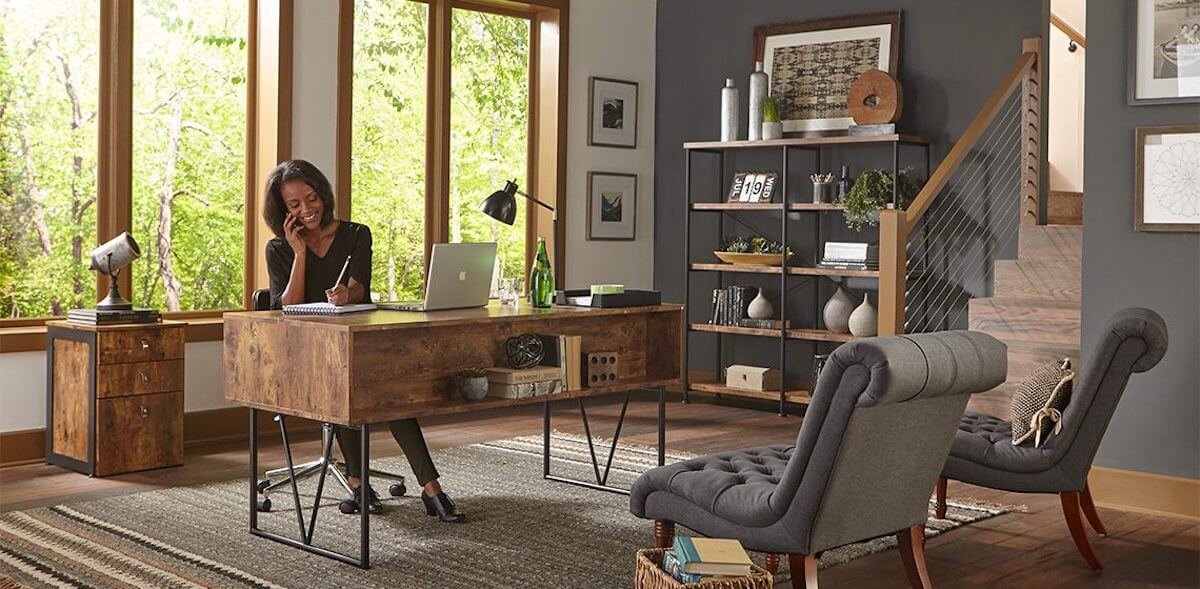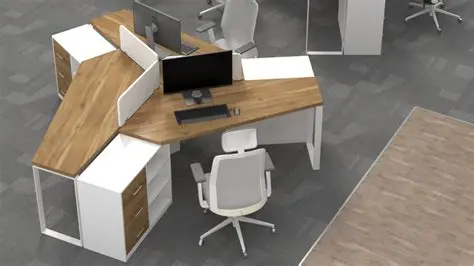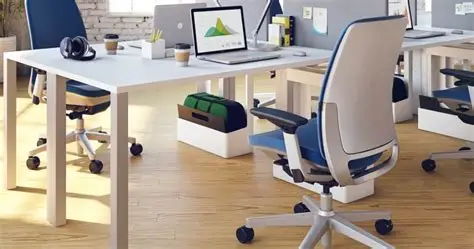When it comes to creating a productive and comfortable workspace, choosing the right office furniture for comfortable working hours is essential. Whether you work from home or in a traditional office setting, the furniture you use can significantly impact your comfort, posture, and overall productivity. From ergonomic chairs to spacious desks, each piece plays a critical role in supporting long hours of work. In this article, we will explore the best office furniture for comfortable working hours, offering you tips on creating an environment that promotes both comfort and efficiency.

1. Ergonomic Chairs: A Must-Have for Comfort
One of the most critical pieces of office furniture is the chair. Spending hours sitting at a desk can take a toll on your back, neck, and posture. That’s why choosing an ergonomic chair is key to maintaining comfort during long working hours.
Key Features to Look for in an Ergonomic Chair
-
Adjustable Height: Allows you to set the chair to the correct height for your desk, ensuring your feet are flat on the floor and your knees are at a 90-degree angle.
-
Lumbar Support: Proper lower back support helps maintain the natural curve of your spine, reducing the risk of back pain.
-
Armrests: Adjustable armrests prevent shoulder and neck strain by allowing your arms to rest comfortably.
-
Breathable Fabric: Look for chairs with breathable upholstery to keep you cool and comfortable throughout the day.
An ergonomic chair is essential for comfort, especially if your work requires sitting for extended periods. It can make all the difference in your physical well-being, enabling you to focus on tasks without constant discomfort.
2. Adjustable Desks: Flexibility for Different Working Styles
An adjustable desk, particularly a standing desk, is another must-have for a comfortable workspace. Sitting for prolonged periods can negatively affect circulation and posture. Alternating between sitting and standing during your workday can help alleviate these issues.
Benefits of Adjustable Desks
-
Improved Posture: Switching between sitting and standing helps maintain better posture and reduces the strain on your lower back.
-
Increased Energy Levels: Standing promotes better blood flow, which can enhance your energy and focus.
-
Customization: Many adjustable desks allow you to set preferred heights, making them perfect for multiple users or adjustable work preferences.
Incorporating an adjustable desk into your workspace can lead to greater comfort, and it’s one of the best ways to support your body during long hours of work.
3. Spacious Desks: Room to Work Efficiently
A spacious desk provides ample room for all your work essentials, from your computer and paperwork to office supplies. A clutter-free, organized desk not only promotes productivity but also contributes to a comfortable working environment.
Key Features to Consider in a Desk
-
Surface Area: Ensure that your desk has enough space for your computer, monitors, and any other tools or documents you need to access regularly.
-
Storage Options: Desks with built-in drawers or filing cabinets help keep your workspace tidy and reduce clutter.
-
Cable Management: Look for desks with cable management features to keep wires out of sight and avoid tangling, creating a cleaner, safer workspace.
A spacious desk will help you stay organized and prevent unnecessary distractions, contributing to a more comfortable working environment.
4. Comfortable and Functional Lighting
Good lighting is essential for a productive and comfortable workspace. Poor lighting can lead to eye strain and headaches, especially during long hours in front of a screen. Having proper task lighting can reduce these issues and improve focus.
Lighting Tips for Your Office
-
Desk Lamps: A good-quality desk lamp with adjustable brightness and a flexible arm can provide direct light where it’s needed without causing glare.
-
Natural Light: Whenever possible, position your desk near a window to take advantage of natural light, which can help boost mood and energy levels.
-
Ambient Lighting: Ensure that the room is well-lit overall to prevent eye strain. Avoid working in dim spaces, as this can cause unnecessary strain on your eyes.
Incorporating the right lighting into your office setup will help you maintain focus, reduce fatigue, and create a more comfortable working environment.
5. Footrests for Better Posture and Comfort
A footrest is a simple yet effective addition to your office furniture setup. If your chair doesn’t allow you to keep your feet flat on the floor, a footrest can help improve your posture and comfort.
Benefits of a Footrest
-
Improved Posture: A footrest encourages proper sitting posture by supporting your legs and reducing strain on your lower back.
-
Increased Comfort: Footrests provide relief to your legs, especially during long periods of sitting, by promoting circulation and reducing pressure.
-
Adjustability: Look for footrests that are height-adjustable and have a non-slip surface for added comfort and stability.
Including a footrest in your office setup will help you maintain comfort throughout the day, especially if you’re prone to lower back pain or leg discomfort.
6. Storage Solutions for a Clutter-Free Workspace
Clutter can make a workspace feel chaotic and uncomfortable, leading to stress and reduced productivity. Storage furniture such as filing cabinets, bookshelves, and drawer organizers can help you keep your workspace tidy and organized.
Types of Storage Solutions
-
Filing Cabinets: Perfect for storing important documents, files, and paperwork that you need to keep close at hand.
-
Bookshelves: Great for organizing books, binders, and reference materials that you use regularly.
-
Drawer Organizers: Keep pens, paper, and other small items neatly organized and easy to access.
By investing in proper storage solutions, you can create a more comfortable, organized workspace that promotes productivity and reduces distractions.
7. Keyboard and Mouse Ergonomics
Your keyboard and mouse are essential tools for your daily tasks, and having the right ergonomic setup is crucial for comfort. Poor ergonomics in these areas can lead to wrist pain, carpal tunnel syndrome, and other repetitive strain injuries.
Tips for Ergonomic Keyboard and Mouse Setup
-
Keyboard Placement: Keep your keyboard at elbow height so that your arms are at a 90-degree angle while typing.
-
Mouse Positioning: Place your mouse close to your keyboard to avoid straining your arm or wrist.
-
Ergonomic Keyboard and Mouse: Consider investing in ergonomic keyboards and mice designed to reduce strain on your wrists and hands.
Proper ergonomics for your keyboard and mouse can help prevent injuries and promote comfort during long working hours.
Conclusion
Choosing the right office furniture is crucial for creating a comfortable and productive workspace. From ergonomic chairs and adjustable desks to proper lighting and storage solutions, each piece of furniture plays an important role in ensuring that you can work comfortably for hours without physical discomfort or distractions. Investing in high-quality, ergonomic furniture will not only improve your comfort but also boost your productivity, making it easier to tackle tasks and stay focused throughout the day. Whether you work from home or in an office, a comfortable workspace is essential for long-term success and well-being.







